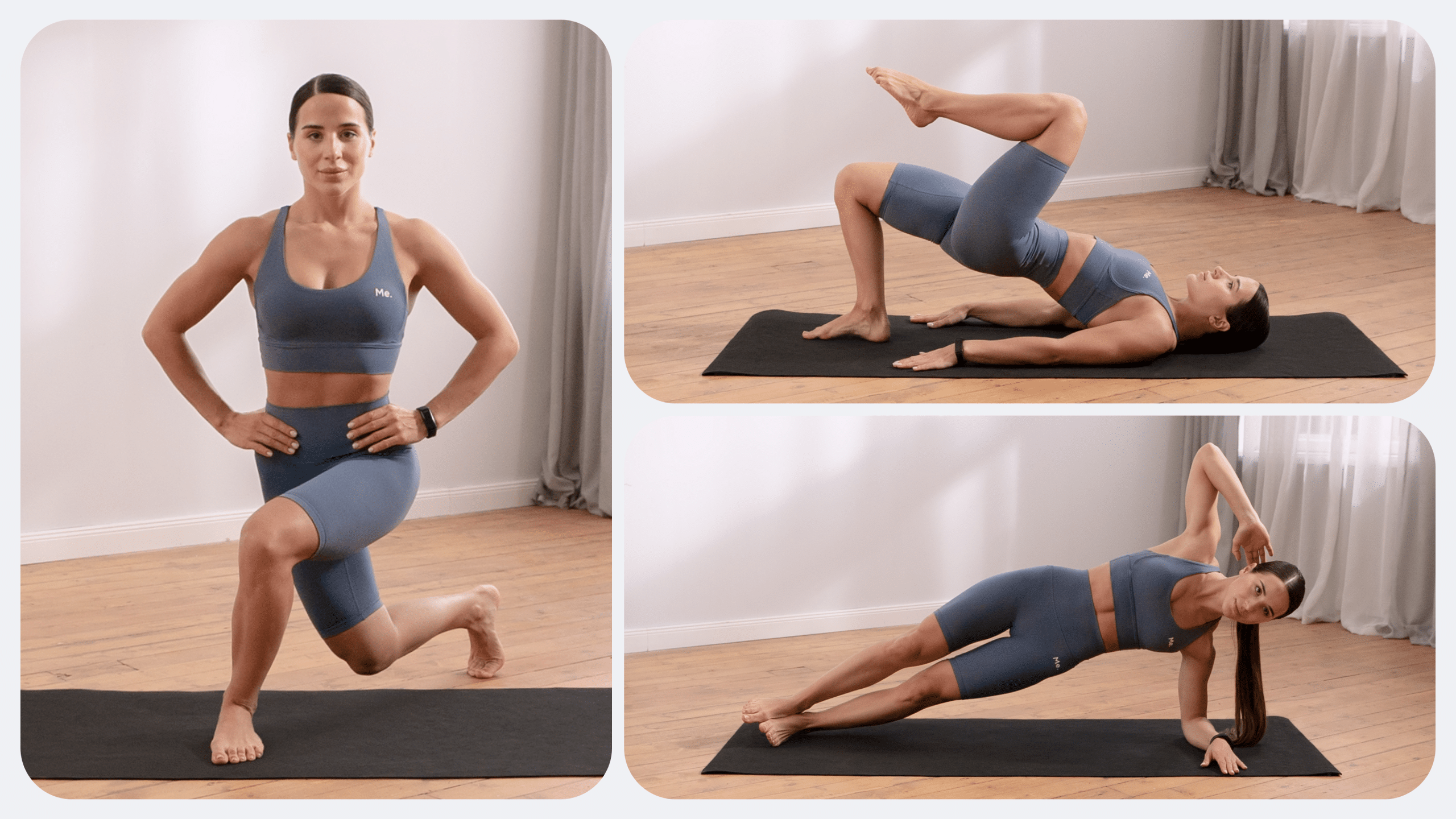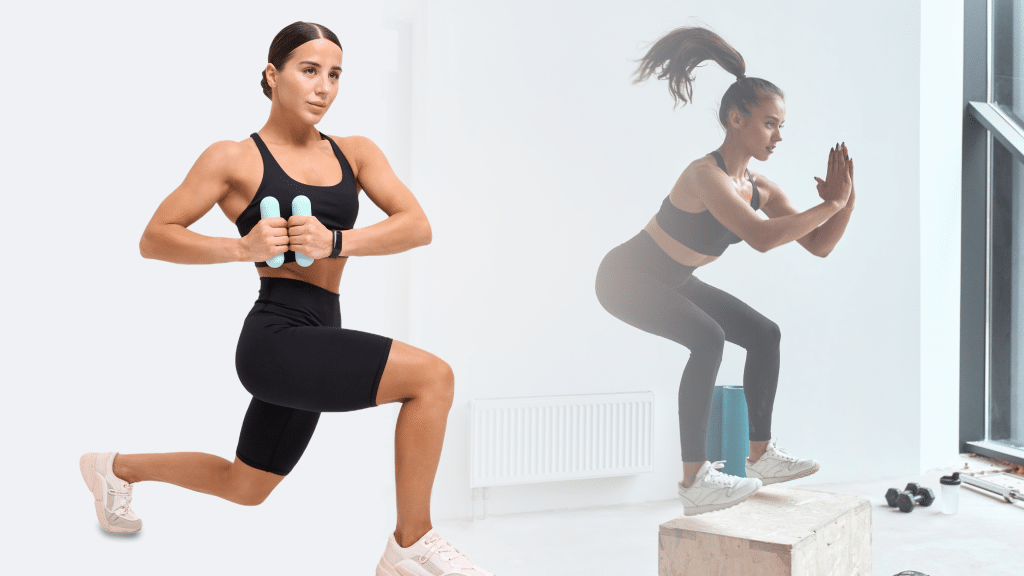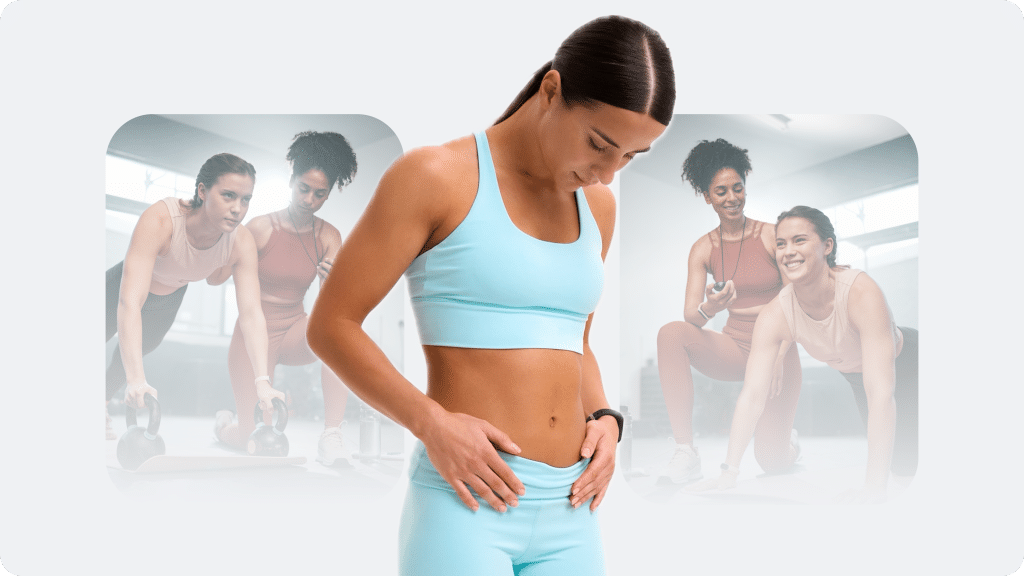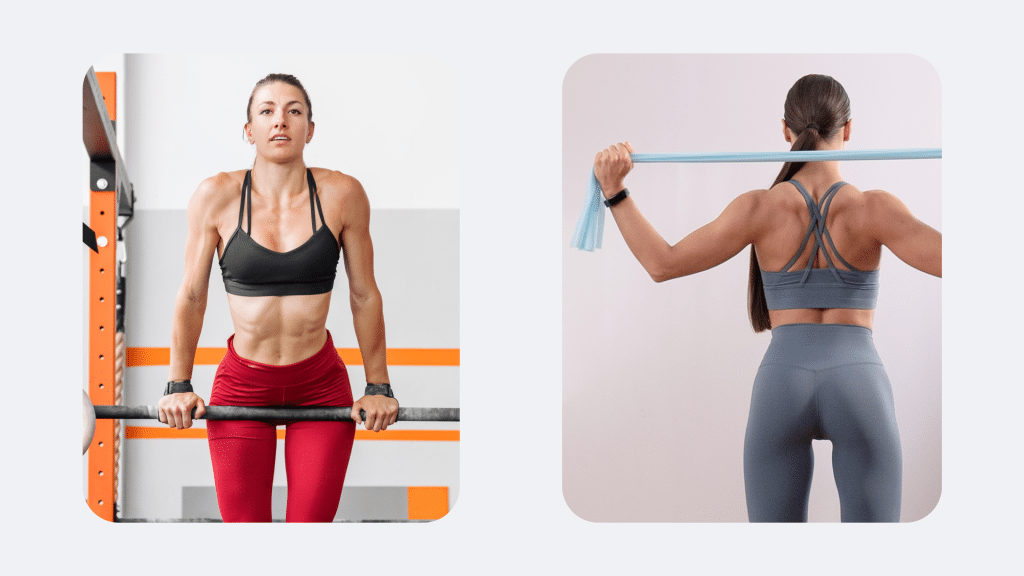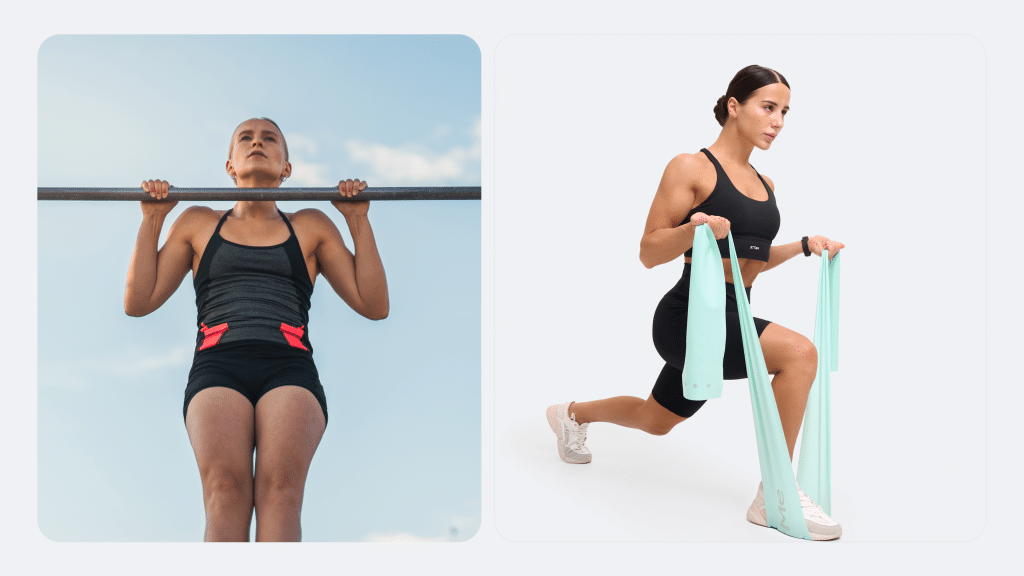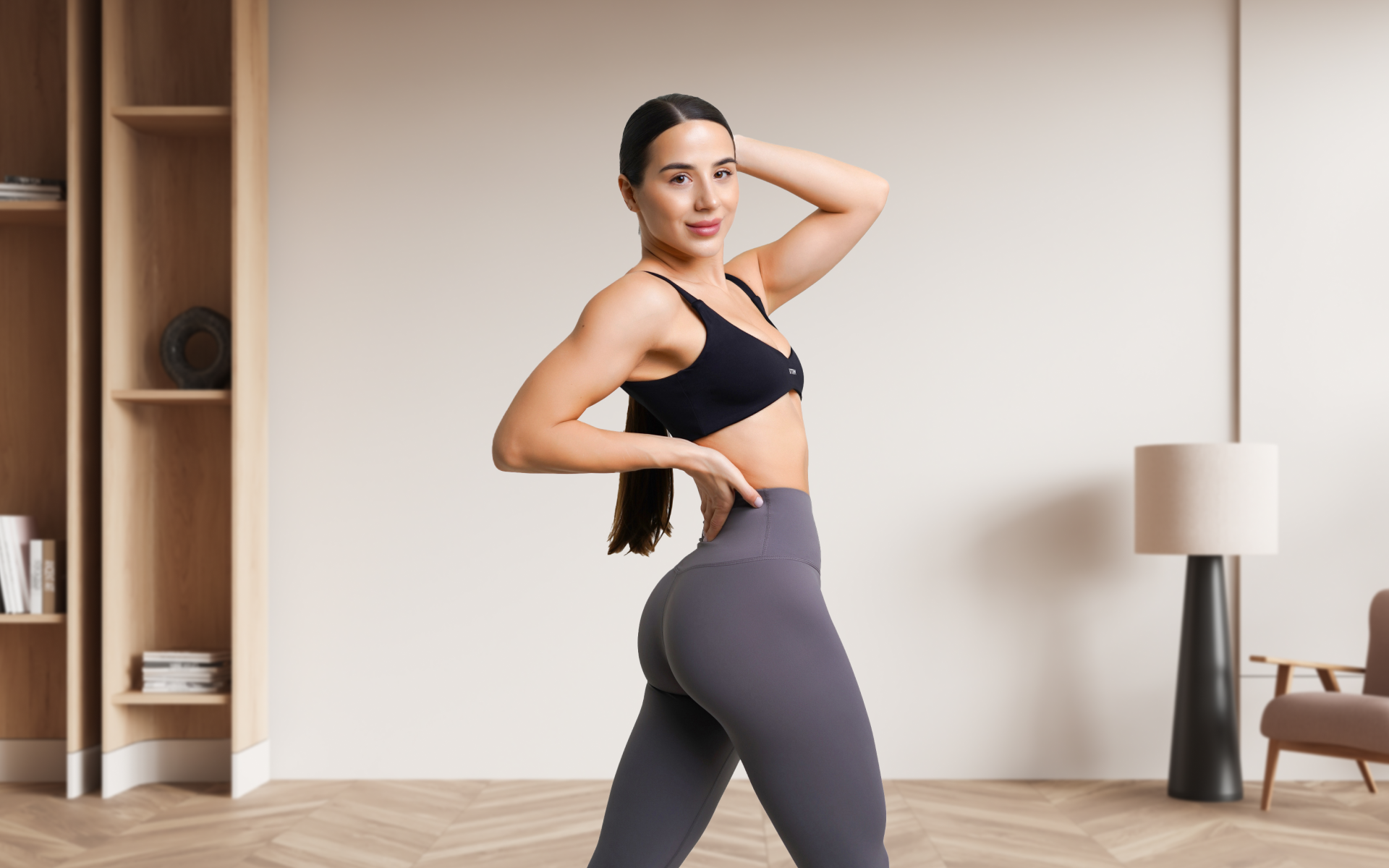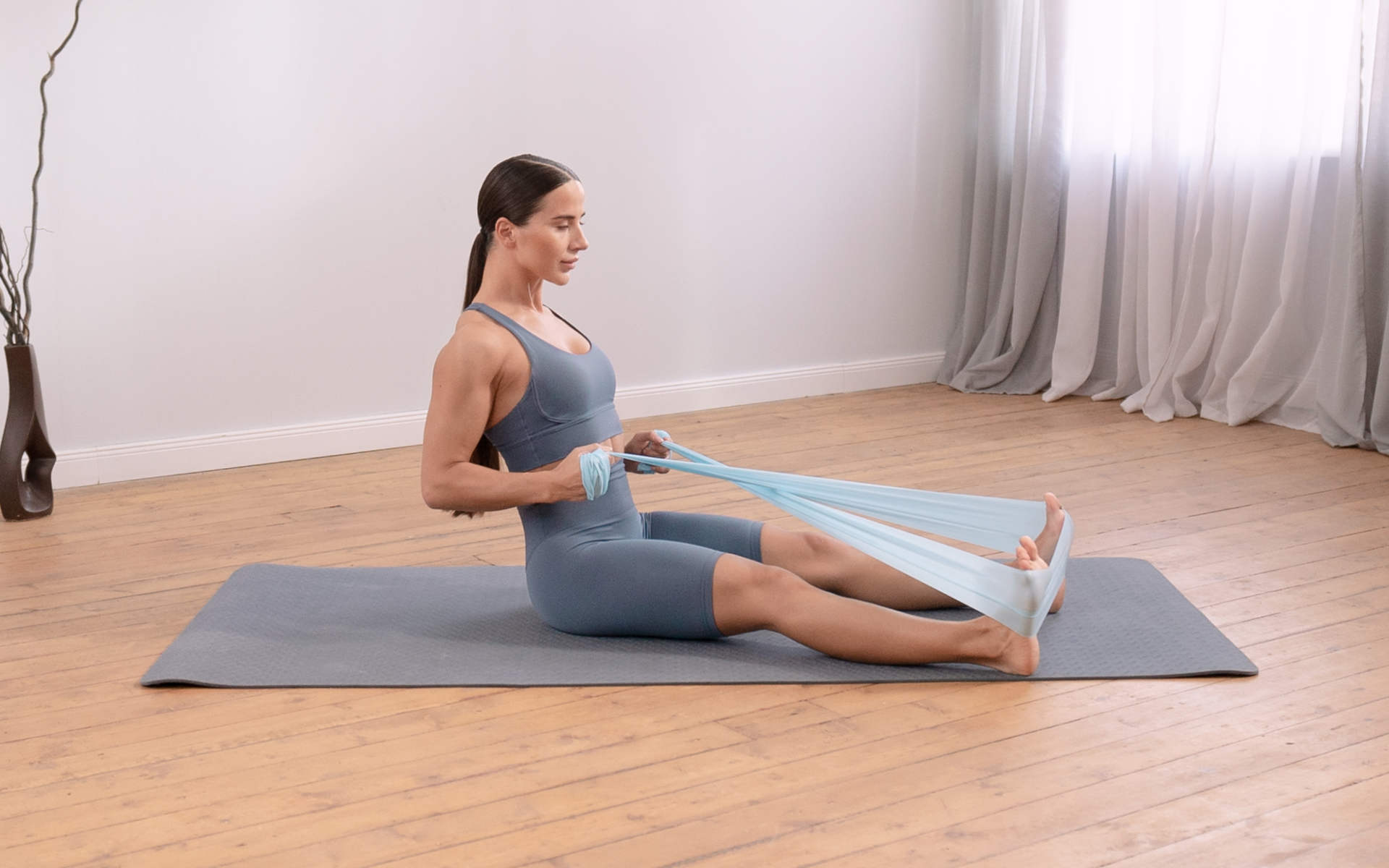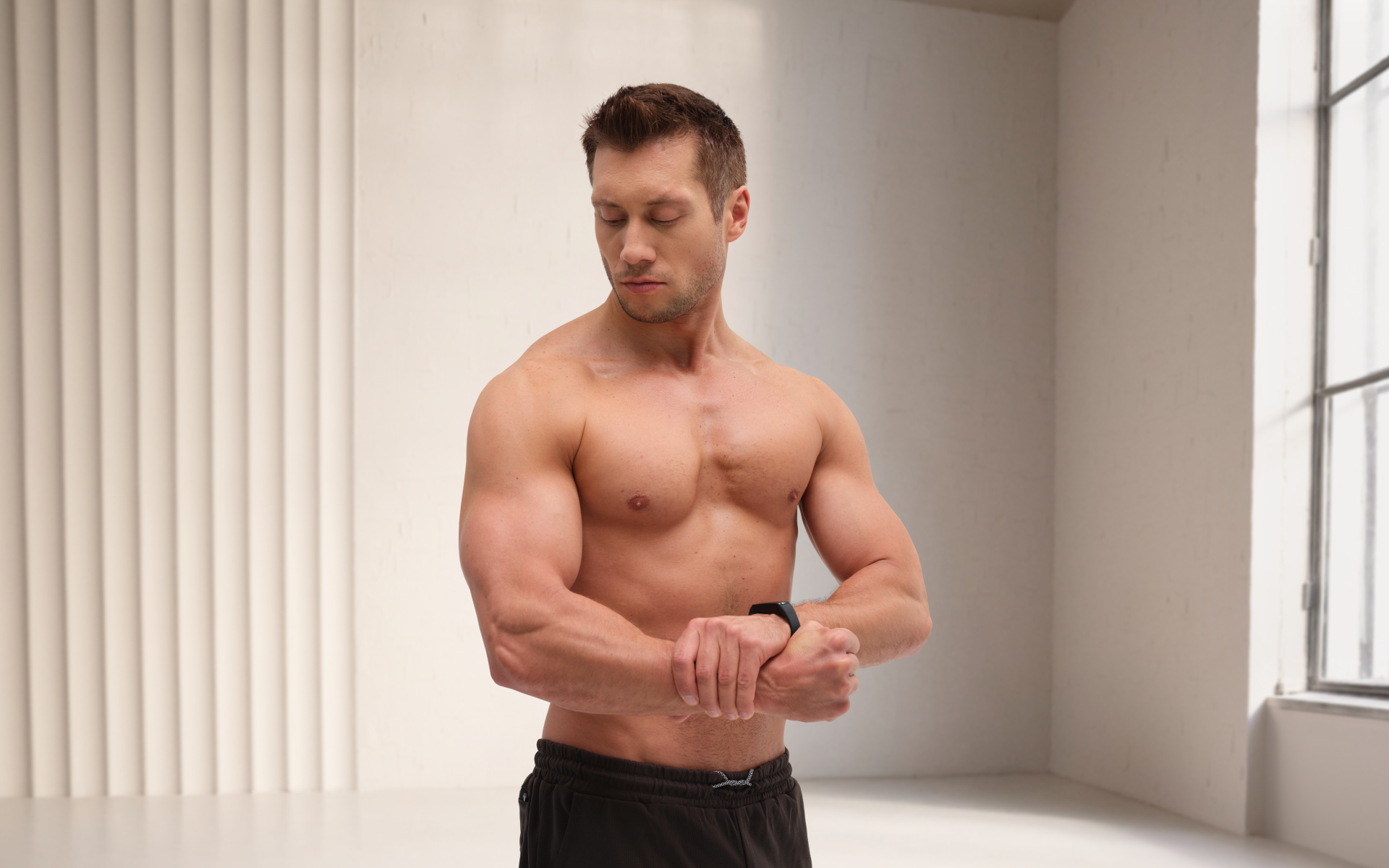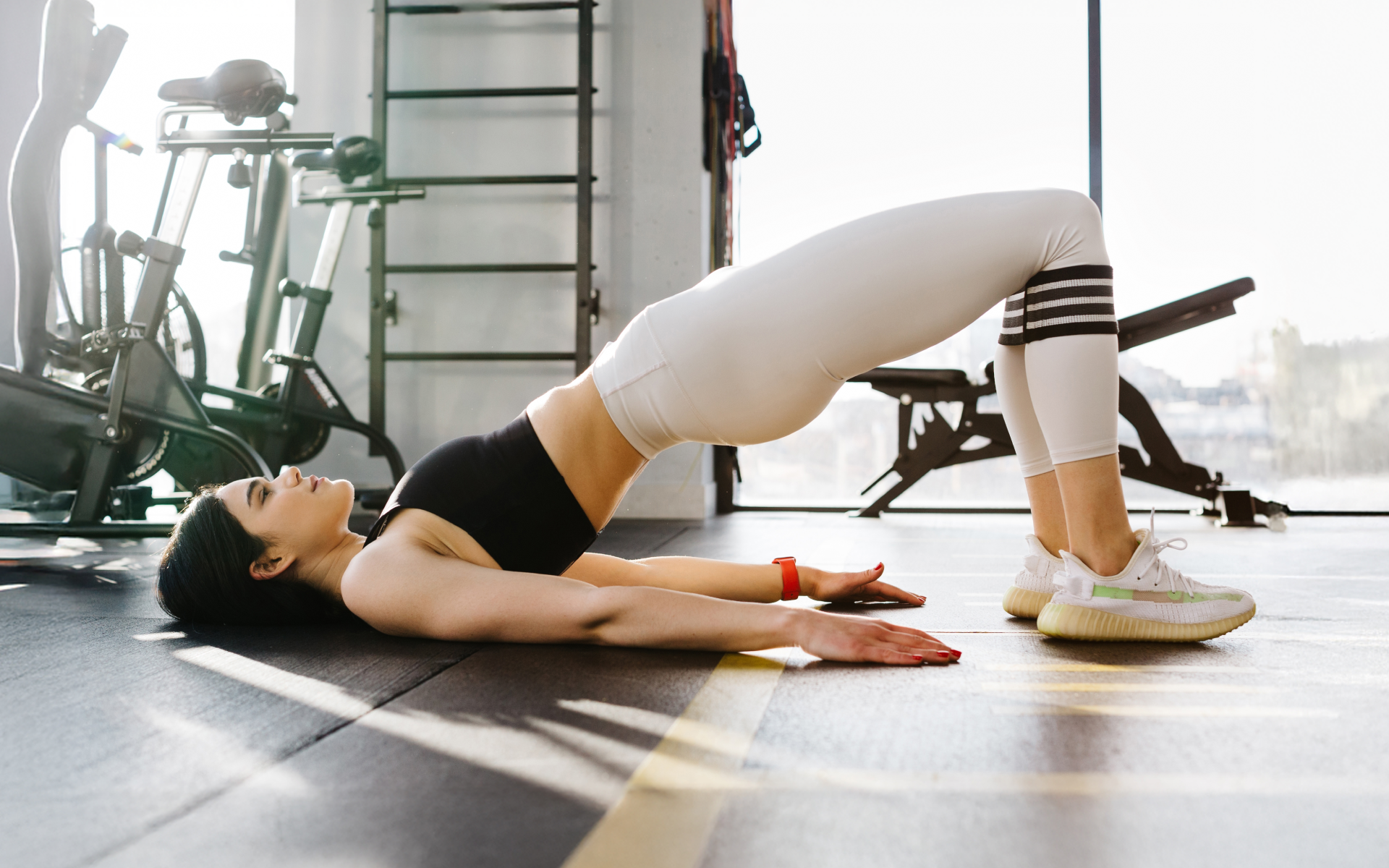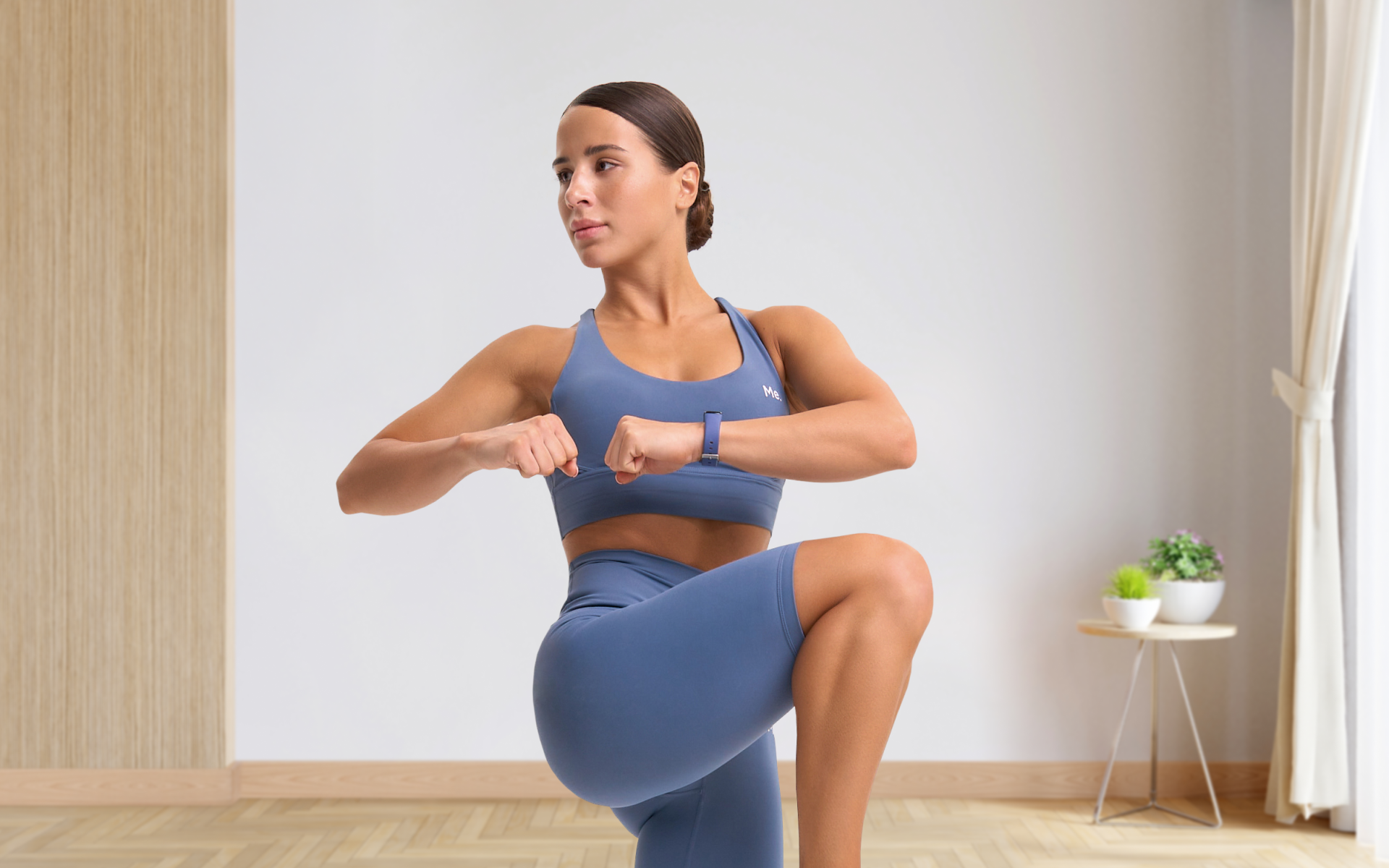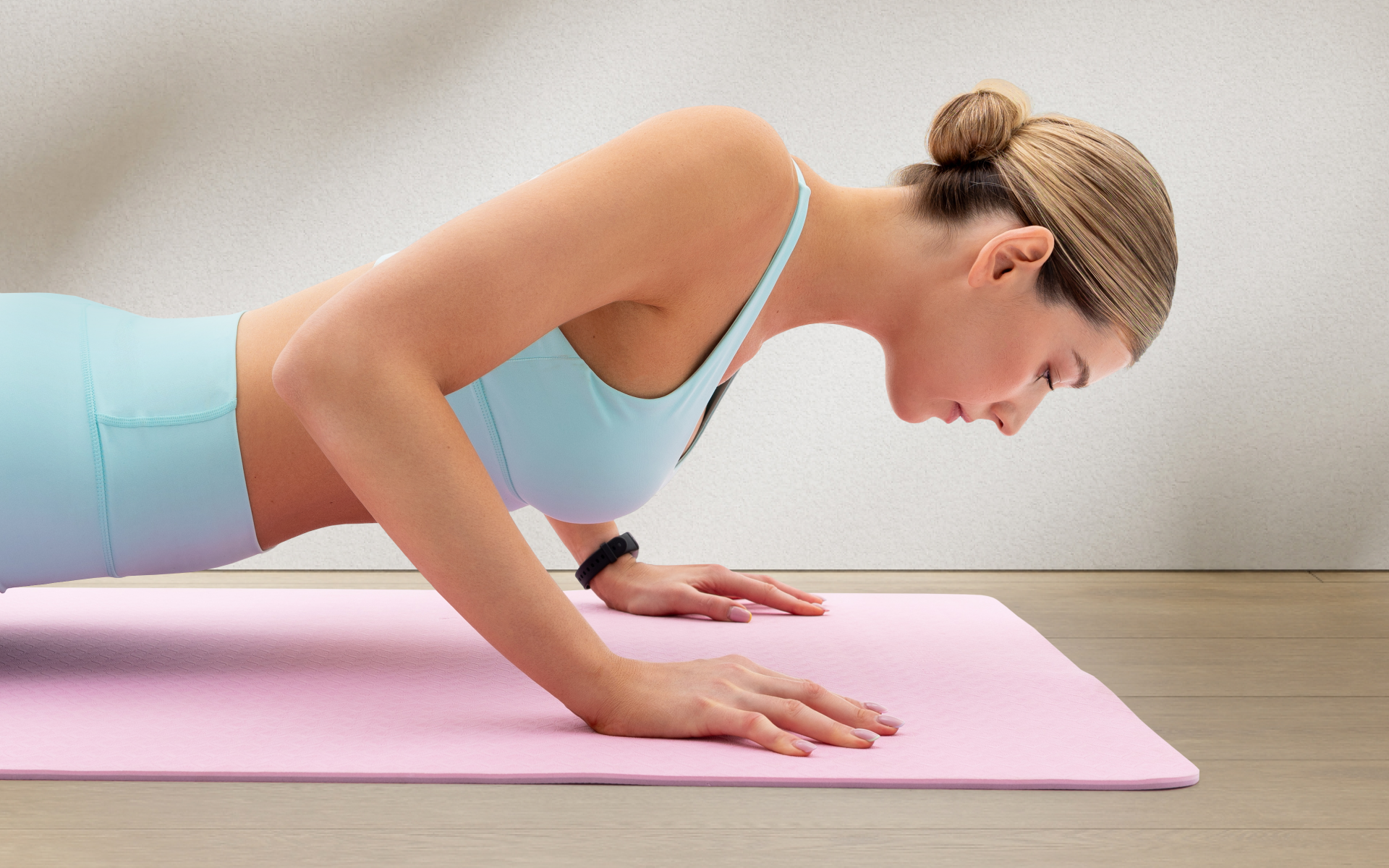The calves are an important muscle group in the lower body that are often overlooked in workouts. Overshadowed by the popular glutes and quads, the calves may not always be given the proper attention they deserve.
However, strong and toned calves are essential for everyday movements such as walking, running, and jumping. They also play a crucial role in providing stability to the ankles and knees (1).
Arguably one of the most effective ways to strengthen your calf muscles is through calisthenics exercises. Calisthenics is a form of body weight training that utilizes natural movements to improve strength, mobility, and overall fitness.
What Are the Best Calisthenics Calf Exercises?
Below are some ideal calisthenics calf exercises to help you build strong and toned calves:
1. Standing Calf Raises
Standing calf raises focus on strengthening the gastrocnemius muscle and are essential for overall calf development. The gastrocnemius muscle is the most superficial muscle in the calf. This muscle combined with the soleus is what makes up the calf.
- Stand with your feet shoulder-width apart.
- Keep your core engaged and spine straight.
- Slowly raise your heels off the ground by contracting your calf muscles.
- Hold the top position for a brief moment. You’ll be on the tips of your toes.
- Lower your heels back down to the starting position.
- For added difficulty, perform this exercise on an elevated surface such as a step or curb.
- Perform 3 sets of 15-20 repetitions.
2. Seated Calf Raises
Seated calf raises target the soleus muscle more effectively due to the bent knee position. This exercise is beneficial for building calf endurance and strength from a seated position.
- Sit on a chair or bench with your feet flat on the floor.
- Keep your knees at a 90-degree angle.
- Lift your heels by pressing down on your toes, engaging the calf muscles.
- Hold the top position for a moment before lowering your heels back to the ground.
- Ensure smooth and controlled movements.
- Perform 3 sets of 15-20 repetitions.
- Use additional weight on your knees for increased resistance.
3. Jump Squats
Jump squats are a dynamic movement that target the calves and also enhance cardiovascular endurance and overall lower-body strength.
- Begin in a squat position with your feet shoulder-width apart.
- Keep your chest up and core tight.
- Explosively jump upwards, using your calves to push off the ground.
- Land softly back into the squat position.
- Ensure your knees are aligned with your toes during each jump.
- Perform 3 sets of 12-15 repetitions.
- Rest briefly between sets to maintain explosive power.
4. Toe Walks
Toe walks improve calf strength and balance by emphasizing the stabilizing role of the calf muscles.
- Stand with feet close together.
- Lift your heels to stand on the balls of your feet.
- Walk forward while keeping your heels elevated. Pretend you’re wearing imaginary high heels.
- Maintain a steady pace and controlled movement.
- For added intensity, hold small weights in your hands.
- Walk for a set distance or time, such as 30-60 seconds.
- Complete 3-4 sets.
5. Single-Leg Calf Raises
Single-leg calf raises increase unilateral strength and balance, providing a focused assessment and development of each calf muscle individually.
- Stand on one leg with the other lifted off the ground.
- Keep your core engaged and your torso upright.
- Slowly raise your heel by contracting the calf of your standing leg.
- Hold the top position momentarily.
- Lower your heel back down without resting it on the ground.
- Perform this exercise on a flat surface or an elevated step for an extra challenge.
- Complete 3 sets of 10-15 repetitions on each leg.
6. Box Jumps
Box jumps build lower-body explosiveness and calf conditioning, which makes them ideal for athletes.
- Stand in front of a sturdy box or platform.
- Keep your feet shoulder-width apart.
- Bend slightly at the knees and hips, preparing for the jump.
- Jump onto the box, using your calves to generate upward force.
- Land softly with both feet on the box.
- Step back down carefully.
- Perform 3 sets of 8-12 repetitions.
If you wish to free yourself from all the extra pounds that have been weighing you down for way too long, start using the BetterMe: Health Coaching app and overhaul your entire life!
7. Plyometric Lunges
Plyometric lunges provide explosive calf engagement along with improving overall lower-body strength and agility.
- Start in a lunge position with one foot forward.
- Engage your core and maintain an upright posture.
- Jump upwards, switching legs in mid-air.
- Land softly in the opposite lunge position.
- Focus on smooth, controlled landings.
- Perform 3 sets of 12-16 repetitions.
- Rest as needed to maintain form and power.
8. Calf Raise Holds
Calf raise intensifies muscle engagement by increasing time under tension, which promotes muscle growth and strength.
- Stand with feet shoulder-width apart or on a raised surface.
- Lift your heels, coming onto the balls of your feet.
- Hold the top position for several seconds.
- Focus on engaging the calf muscles fully.
- Lower your heels back to the ground slowly.
- Perform 3 sets of 8-10 repetitions, holding for 5-10 seconds each time.
- Increase hold duration as your strength improves.
9. Explosive Step-Ups
Explosive step-ups build leg power and engage the calves through forceful upward movements.
- Place one foot on a sturdy platform or step.
- Keep your back straight and core engaged.
- Push off with the foot on the platform, driving your opposite knee up.
- Land softly with both feet on the ground.
- Alternate legs with each repetition.
- Perform 3 sets of 10-12 repetitions per leg.
- Use light weights for added resistance if you wish.
Read more: Killer Calf Exercises To Amp Up Your Workout Routine
10. Skater Jumps
Skater jumps enhance lateral agility, coordination, and calf strength by mimicking the fluid motion of speed skating.
- Stand with your feet hip-width apart.
- Leap laterally from one foot to the other, landing on the opposite leg.
- Keep your arms engaged for balance.
- Ensure your landing knee is slightly bent to absorb impact.
- Continue jumping side-to-side for a set duration or repetition count.
- Perform 3 sets of 15-20 jumps per side.
- Focus on rhythm and single leg balance throughout the movement.
Are Calves Difficult to Grow?
Growing calf muscles can be challenging, and several factors contribute to this difficulty. One of the primary reasons is genetic predisposition. Calf muscle size and shape are largely influenced by genetics, which can determine the potential for growth and the initial muscle fiber composition (2).
The calf muscles, specifically the gastrocnemius and soleus, have a high proportion of slow-twitch muscle fibers. These fibers are more endurance-oriented and less responsive to hypertrophy (muscle growth) than fast-twitch fibers (3).
This composition makes it more difficult to achieve noticeable size increases, as slow-twitch fibers don’t grow as quickly or as significantly as their fast-twitch counterparts.
In addition, the calves are constantly engaged in daily activities such as walking, climbing stairs, and balancing, which can lead to them being resistant to growth from typical exercise routines. As they’re accustomed to frequent use, they require a more intense and varied approach to stimulate growth effectively.
Common training mistakes also play a role in the difficulty of calf development. Many individuals either neglect calf exercises altogether or perform them with insufficient intensity or variety. It’s essential to use proper technique and a range of exercises that target different parts of the calf muscles to spur growth.
Despite these challenges, targeted strategies can help overcome them.
Can You Build Calves with Calisthenics?
While growing calves can be challenging due to their genetic predispositions and muscle fiber composition, a dedicated calisthenics routine can lead to significant improvements.
Here’s why:
- Calisthenics incorporates functional movements that mimic real-life activities, providing more holistic muscle development.
- Body weight exercises require a greater range of motion and engage multiple muscle groups simultaneously, which leads to increased activation and intensity for the calves.
- The variety of calisthenics exercises allows for different areas of the calf muscles to be targeted and prevents adaptation from repetitive movements.
- Calisthenics can be done anywhere with little to no equipment needed, which makes it accessible for all levels and locations.
How to Train Calves with Just Your Body Weight
To effectively grow your calf muscles using calisthenics and body weight exercises, you should consider the following tips:
Exercise Frequency and Intensity
Aim to work your calves 2-3 times a week. Focus on high-repetition sets, as calves are accustomed to frequent use and respond well to endurance-based training. Start with 15-20 reps per set and gradually increase as your strength improves (4).
Progressive Overload
Continuously challenge your muscles by gradually increasing the difficulty of your workouts (5). This can be done by adding more repetitions, reducing rest time between sets, or incorporating more challenging variations such as single-leg calf raises.
Read more: Beginner Calisthenics Moves: A Complete Guide to Getting Started
Proper Form
Ensure you’re using the correct technique to maximize muscle engagement and minimize injury risk (6). Pay attention to fully extending and contracting your calf muscles during each exercise.
Variety and Angles
Incorporate a variety of exercises that target different angles of the calf muscles. For example, combine standing calf raises, seated calf raises, and toe walks to engage different muscle fibers and prevent plateaus.
Recovery
Allow adequate rest between workouts to enable muscle repair and growth (7). Incorporate stretching and foam rolling to maintain calf flexibility and reduce soreness.
Nutrition and Hydration
Support muscle growth with a balanced diet that is rich in protein, healthy fats, and carbohydrates. Stay hydrated to maintain optimal muscle function and recovery (8).
Time Under Tension
Increase the time your muscles are under tension by adding pause holds at the top of calf raises. This will intensify the workout and promote muscle growth (9).
Incorporate Explosive Movements
Include exercises such as jump squats and box jumps to engage fast-twitch muscle fibers of the lower body, which are essential for building size and strength in the calves.
Do Calves Need High Reps?
High repetitions are particularly beneficial for calf development due to their muscle fiber composition. Calves are predominantly made up of slow-twitch fibers (10), which are endurance-oriented and respond well to high-rep training (3).
Engaging these fibers through exercises such as calf raises or toe walks can enhance muscle endurance and lead to hypertrophy over time. Given their daily use in activities such as walking, calves are naturally suited to high-rep workouts.
However, it’s important to balance high-rep training with other strategies, such as progressive overload and variety, to prevent adaptation and promote muscle growth effectively.
Skinny calves can be due to a variety of factors, including genetics, lack of targeted exercise, or even overall body composition. Here are a few common reasons: Incorporating specific calf exercises can help build muscle and improve the appearance of your calves. Yes, calf raises without weights can be effective, particularly if you’re just starting out or looking to improve endurance and muscle tone. Body weight calf raises can help strengthen and build your calf muscles by focusing on high repetitions and proper form. Here are a few tips to maximize their effectiveness: If you’re consistent and focus on proper technique, you’ll likely see improvements in strength and muscle tone. Yes, the size and shape of your calves can be significantly influenced by genetics. Here’s how genetics can play a role: While genetics play a role, targeted exercises and consistent training can still help improve the size and strength of your calves. Calves can look different from person to person due to a combination of factors: These factors combine to create a wide variety of calf shapes and sizes among individuals. If you’re looking to change the appearance of your calves, targeted exercises and consistent training can help.Frequently Asked Questions
What are 3 exercises that strengthen the calves?
Why are my calves so skinny?
Do calf raises without weights work?
Are calves genetic?
Why do calves look different?
The Bottom Line
Building calf muscles can be challenging. They’re largely influenced by genetics, resistant to growth from daily activities, and often neglected or trained incorrectly. However, calisthenics offers a promising approach for effectively training calves using body weight exercises.
By incorporating various strategies such as high repetitions, progressive overload, proper form, and exercise variety, you can achieve noticeable size and strength gains in your calf muscles. Remember to prioritize recovery and proper nutrition to support muscle growth and avoid injury.
DISCLAIMER:
This article is intended for general informational purposes only and does not serve to address individual circumstances. It is not a substitute for professional advice or help and should not be relied on for making any kind of decision-making. Any action taken as a direct or indirect result of the information in this article is entirely at your own risk and is your sole responsibility.
BetterMe, its content staff, and its medical advisors accept no responsibility for inaccuracies, errors, misstatements, inconsistencies, or omissions and specifically disclaim any liability, loss or risk, personal, professional or otherwise, which may be incurred as a consequence, directly or indirectly, of the use and/or application of any content.
You should always seek the advice of your physician or other qualified health provider with any questions you may have regarding a medical condition or your specific situation. Never disregard professional medical advice or delay seeking it because of BetterMe content. If you suspect or think you may have a medical emergency, call your doctor.
SOURCES:
- How important is calf strength? (2024,coastsport.com.au)
- Genetic aspects of skeletal muscle strength and mass with relevance to sarcopenia (2012,nih.gov)
- The Effects of Endurance, Strength, and Power Training on Muscle Fiber Type Shifting (2012,journals.lww.com)
- Progressive overload without progressing load? The effects of load or repetition progression on muscular adaptations (2022,nih.gov)
- Progression of volume load and muscular adaptation during resistance exercise (2014,nih.gov)
- Prevent Injuries with Proper Form During Workouts (2021,nus.edu.sg)
- THE IMPORTANCE OF REST DAYS AS PART OF YOUR WORKOUT PROGRAM (2022,myacare.com)
- Nutrition for Physical Activity and Athletics (2019,okstate.edu)
- Muscle time under tension during resistance exercise stimulates differential muscle protein sub-fractional synthetic responses in men (2012,nih.gov)
- Muscle fibre type populations of human leg muscles (1975,nih.gov)
